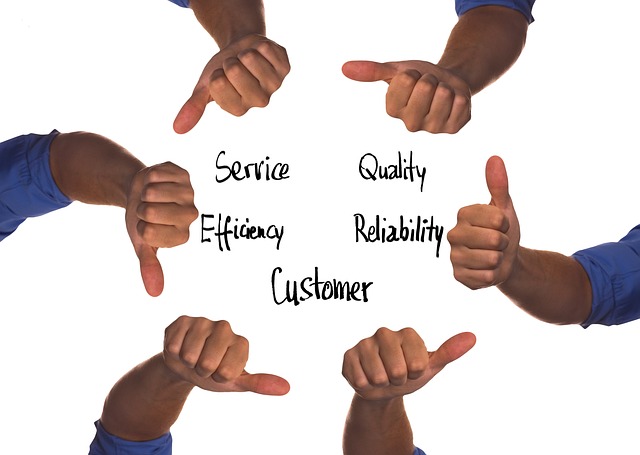Customer Relationship Management (CRM) software is a powerful tool for small businesses aiming to grow and enhance customer relationships. By centralizing client data, CRM offers insights into customer behavior, enabling personalized marketing and improved satisfaction. Key features include contact management, lead tracking, sales pipeline visualization, and marketing automation, streamlining operations and boosting productivity. Integrating CRM with accounting, marketing automation, and e-commerce platforms provides better data synchronization and strategic decision-making. CRM also allows businesses to measure success and ROI, optimizing strategies based on analytics for sustainable growth.
- Understanding Customer Relationship Management (CRM) Software
- Benefits of CRM for Small Businesses
- Key Features to Look For in a CRM System
- Implementing CRM: A Step-by-Step Guide
- Integrating CRM with Other Business Tools
- Measuring Success and ROI with CRM
Understanding Customer Relationship Management (CRM) Software

Customer Relationship Management (CRM) software is a powerful tool designed to help small businesses manage and grow their relationships with customers. At its core, CRM software allows businesses to track interactions with clients across various touchpoints, from initial contact to sale and beyond. By centralizing this data, it provides a comprehensive view of each customer’s journey, enabling businesses to deliver personalized experiences and drive sales growth.
CRM software offers features like contact management, lead tracking, sales pipeline visualization, and marketing automation. These capabilities streamline processes, enhance productivity, and foster stronger connections with customers. For small businesses looking to expand their reach, CRM software can be a game-changer, helping them compete effectively in the market by optimizing customer interactions and maximizing every opportunity for growth.
Benefits of CRM for Small Businesses

Customer Relationship Management (CRM) software is a powerful tool that can significantly boost small business growth. By centralizing customer data, it allows businesses to gain valuable insights into their clients’ behavior and preferences, enabling them to tailor their marketing strategies accordingly. This personalized approach increases customer satisfaction and loyalty, leading to higher sales and retention rates.
Moreover, CRM software streamlines sales processes by automating tasks such as lead tracking, opportunity management, and sales forecasting. This not only saves time but also reduces errors, ensuring that the sales team can focus on closing deals and building stronger relationships with customers. In today’s competitive market, a well-implemented CRM system gives small businesses a competitive edge, helping them stand out and thrive.
Key Features to Look For in a CRM System

Implementing CRM: A Step-by-Step Guide

Implementing a Customer Relationship Management (CRM) software is a strategic move for small businesses aiming to grow and thrive. It’s a process that, when executed correctly, can revolutionize how your business interacts with customers, streamlining operations and boosting sales. Here’s a simple step-by-step guide:
1. Assess Your Needs: Begin by understanding your business requirements. Identify the pain points in your current customer management process and determine what features you need from a CRM software. This could include contact management, sales pipeline tracking, email marketing, or automated reporting.
2. Choose the Right CRM: With numerous options available, select a CRM that aligns with your budget and specific needs. Consider factors like ease of use, scalability, and integration capabilities with other tools you use. Popular choices for small businesses often include user-friendly platforms like HubSpot CRM, Salesforce Essentials, or Zoho CRM, each offering various packages to suit different scales of operation.
3. Plan Your Data Migration: Organize and migrate your existing customer data into the new CRM system. Ensure data accuracy and completeness during this process. A clean and well-structured database is crucial for effective CRM usage.
4. Configure and Customize: Set up the CRM to match your business processes. Customize fields, forms, and workflows to reflect your unique sales and marketing strategies. This step ensures that the software works for you rather than forcing your business to adapt.
5. Train Your Team: Equip your employees with the knowledge they need to use the CRM effectively. Provide training sessions or tutorials to ensure everyone understands their roles and responsibilities within the system. A well-trained team will maximize the benefits of the new CRM.
6. Pilot and Refine: Before fully adopting, test the CRM in a controlled environment. Run pilot projects, gather feedback, and make necessary adjustments to the setup. This iterative process ensures that the CRM is optimized for your business before full implementation.
Integrating CRM with Other Business Tools

Integrating Customer Relationship Management (CRM) software with other business tools is a strategic move that can significantly enhance small business growth. By seamlessly connecting CRM with accounting, marketing automation, and e-commerce platforms, businesses gain a holistic view of their operations. This unified approach allows for better data synchronization, ensuring that customer interactions are accurately reflected in financial records and marketing strategies.
For instance, linking CRM to an accounting system enables real-time updates on sales and revenue generation, while integrating it with marketing automation tools facilitates personalized campaigns based on customer behavior. Such integrations not only streamline processes but also provide valuable insights to inform decision-making. This comprehensive understanding of the customer journey empowers small businesses to tailor their offerings, improve satisfaction, and drive sustainable growth.
Measuring Success and ROI with CRM

Measuring success and return on investment (ROI) is a critical aspect of any growth strategy, especially for small businesses looking to justify their Customer Relationship Management (CRM) software expenditure. CRM tools offer valuable insights by tracking customer interactions and sales pipelines, enabling business owners to gauge performance against set targets. By analyzing key metrics such as conversion rates, lead generation, and customer retention, businesses can identify trends and areas for improvement.
For instance, a small e-commerce store using CRM software might monitor the number of website visitors who become paying customers over a specific period. If the ROI indicates that marketing campaigns through social media are driving higher sales, this data can inform future budget allocations. Such analytics empower small businesses to make data-driven decisions, optimize their strategies, and ultimately achieve sustainable growth.
Customer Relationship Management (CRM) software is a powerful tool for small businesses aiming to thrive in today’s competitive market. By implementing a robust CRM system, businesses can efficiently track customer interactions, streamline sales processes, and gain valuable insights to drive growth strategies. Through its various benefits, including improved data organization, enhanced communication, and better lead management, CRM enables small businesses to provide personalized experiences and foster stronger client relationships. This article has outlined the essential features to consider, provided a step-by-step guide to implementation, and highlighted successful integration with other business tools. Remember that measuring ROI is key; tracking key metrics will help you understand the impact of your CRM investment and make data-driven adjustments for optimal small business growth.
